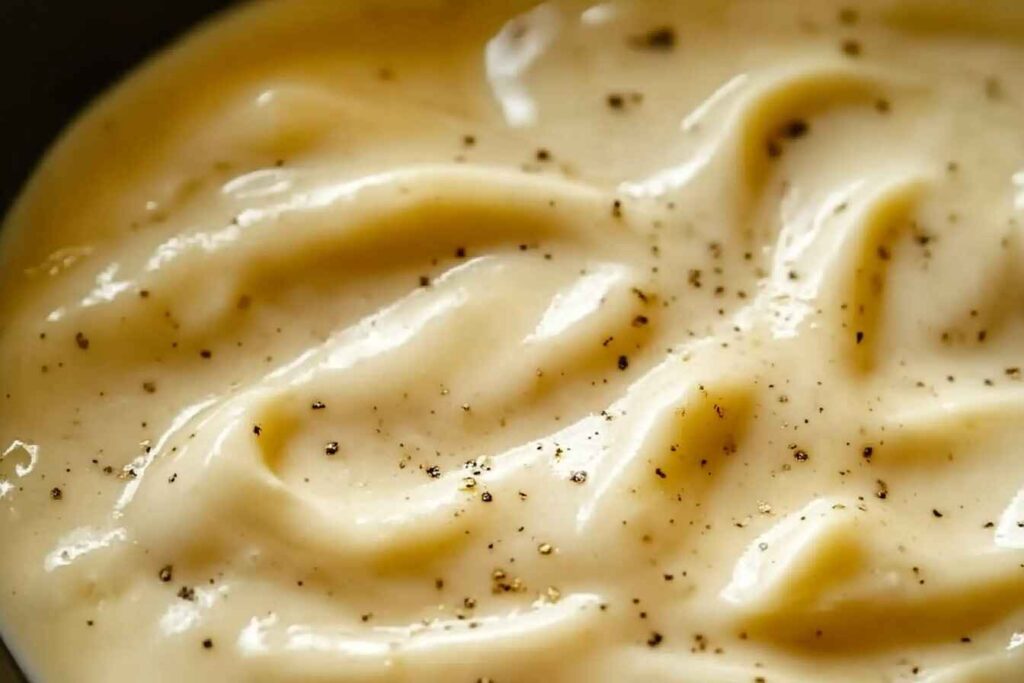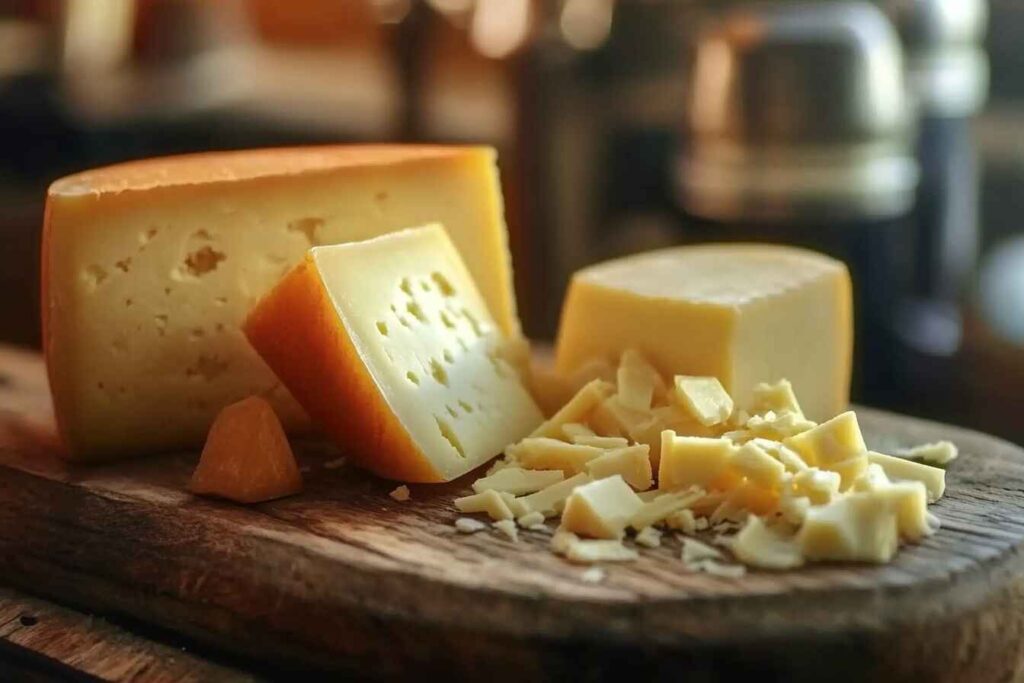What cheeses are not to use for mac and cheese ?Mac and cheese is the ultimate comfort food a warm, gooey dish that combines pasta and cheese into a creamy masterpiece. However, not all cheeses are created equal when it comes to crafting the perfect mac and cheese. Choosing the wrong cheese can lead to a dish that’s clumpy, gritty, greasy, or even downright unappetizing.
The key to great mac and cheese lies in the meltability, texture, and flavor of the cheese you choose. Some cheeses, while delicious on their own, simply aren’t suitable for this classic dish because of their inability to melt smoothly or their overpowering flavors. In this article, we’ll explore which cheeses you should avoid for mac and cheese, explain why they don’t work well, and provide tips for achieving the perfect cheesy blend.
When it comes to making mac and cheese, understanding the characteristics of your cheese choices is essential. Let’s first explore the traits that make a cheese work beautifully for this dish before diving into those that don’t.For more insights into achieving a creamy texture, check out our perfect mac and cheese recipe.
Table of Contents
Key Characteristics of Good Mac and Cheese Cheeses
Mac and cheese relies on a harmonious combination of creaminess, meltability, and flavor. To understand why some cheeses don’t work, it’s important first to identify the qualities of cheeses that excel in this dish. Here’s a breakdown of the key traits that make a cheese suitable for mac and cheese:
1. Meltability: The Key to Creaminess
The hallmark of a great mac and cheese is its luscious, creamy texture. Cheeses that melt smoothly ensure a velvety sauce that clings perfectly to the pasta. The best melting cheeses contain a balanced protein and fat ratio, allowing them to transform into a liquid without separating or clumping.
Examples of cheeses with excellent meltability:
- Cheddar: A classic choice for its smooth melt and versatile flavor.
- Gouda: Adds creaminess with a slightly sweet undertone.
- Monterey Jack: Known for its mild flavor and smooth melting properties.
2. Creamy Texture
A cheese’s texture plays a vital role in the mouthfeel of the dish. Cheeses that produce a creamy consistency without becoming stringy or oily are ideal. This is why processed cheeses like Velveeta, although controversial among purists, are often used they provide consistent creaminess.
3. Balanced Flavor
The flavor of the cheese should complement the pasta without being too overpowering. Cheeses that are mild to medium in intensity allow for the creamy sauce to shine while offering richness. This balance can also be achieved by blending multiple cheeses to combine creaminess with a hint of sharpness or nuttiness.
Cheeses that offer well-rounded flavors:
- Sharp Cheddar: Adds a tangy, robust flavor.
- Fontina: Provides a nutty, buttery note.
- Gruyère: Offers depth with a slightly sweet and nutty taste.
4. Avoidance of Separation
Some cheeses tend to “break” or separate when exposed to high heat, leading to a greasy or clumpy sauce. A good mac and cheese cheese should maintain its integrity when heated and blended into a sauce.
Cheeses That Don’t Work Well in Mac and Cheese
Despite their popularity in other dishes, some cheeses lack these key characteristics. From gritty textures to overwhelming flavors, certain varieties can completely derail the creamy consistency and comforting taste of mac and cheese. Below, we’ll explore specific cheeses that are best avoided for this dish, detailing their shortcomings and why they fail to deliver.

Cheeses That Don’t Work Well in Mac and Cheese
Not every cheese is made for the creamy, comforting embrace of mac and cheese. Some are too crumbly, others too strong, and a few refuse to melt at all. Here’s a closer look at cheeses that should generally be avoided when making this dish:
1. Parmesan
- Why It Doesn’t Work:
Parmesan is a hard cheese with low moisture content. While Parmesan is excellent as a topping, its gritty texture makes it unsuitable as a base for sauces. Learn more about enhancing mac and cheese with creative add-ins. - Common Issues:
Gritty texture and difficulty blending into sauces. - Pro Tip: Use Parmesan sparingly as a garnish or mix it with a highly meltable cheese like cheddar to minimize textural issues.
2. Blue Cheese
- Why It Doesn’t Work:
Blue cheese has a bold, tangy flavor that can overpower the dish. Its crumbly texture also doesn’t lend itself well to melting into a smooth sauce. The strong, tangy flavor of blue cheese can overpower the dish. For balanced flavor combinations, explore the best cheese combinations for mac and cheese. - Common Issues:
Overpowering taste and inconsistent melting. - Pro Tip: If you must use blue cheese, combine it with a neutral, creamy cheese like Monterey Jack to balance the flavor.
3. Feta
- Why It Doesn’t Work:
These crumbly cheeses lack the smooth meltability required for mac and cheese. If you’re looking to experiment, consider choosing the right pasta for mac and cheese to better match your cheese choices. - Common Issues:
Crumbly texture and lack of creaminess. - Pro Tip: Save feta for cold dishes or Mediterranean-style pasta salads.
4. Goat Cheese
- Why It Doesn’t Work:
Goat cheese has a distinctive tang that can clash with the flavors of mac and cheese. While it softens when heated, it doesn’t achieve the smooth, creamy texture required for a cheese sauce. - Common Issues:
Overly tangy flavor and a tendency to curdle under heat. - Pro Tip: Use goat cheese sparingly in recipes where its tang can be an accent rather than the main feature.
5. Ricotta
- Why It Doesn’t Work:
Ricotta has a grainy texture and doesn’t melt well, which means it won’t produce the silky smooth sauce mac and cheese demands. It’s better suited for lasagna or stuffed pastas. - Common Issues:
Grainy and lumpy consistency. - Pro Tip: Blend ricotta with cream and mascarpone to improve its smoothness if you’re set on using it.
6. Halloumi
- Why It Doesn’t Work:
Halloumi is a firm, grillable cheese that doesn’t melt. Its high melting point makes it ideal for frying or grilling but useless for a cheese sauce. - Common Issues:
Firm texture that resists melting. - Pro Tip: Halloumi is best reserved for fried cheese sticks or as a topping for salads.
7. Brie
- Why It Doesn’t Work:
Brie might seem like a luxurious choice, but it often becomes greasy when heated. Its high fat content separates under heat, leading to an oily sauce instead of a creamy one. - Common Issues:
Greasy texture and separation. - Pro Tip: Use brie in baked recipes where it can maintain its structure, rather than in a cheese sauce.
Why These Cheeses Are Problematic for Mac and Cheese
Cheese is a complex food with unique properties influenced by its fat content, moisture level, and protein structure. These factors determine whether a cheese will melt smoothly into a creamy sauce or become clumpy, greasy, or gritty. Let’s explore why the cheeses mentioned earlier don’t perform well in mac and cheese.
1. Parmesan: Gritty Texture
- Chemical Composition: Parmesan is a hard, aged cheese with a very low moisture content. Its proteins are tightly bound, which makes it difficult for the cheese to melt into a creamy consistency. Instead, it tends to break apart into small, grainy particles.
- Why It Fails: The lack of moisture and meltability means Parmesan cannot form the smooth emulsion needed for a mac and cheese sauce. It works better as a topping or flavor enhancer rather than the base cheese.
2. Blue Cheese: Overpowering Flavor
- Chemical Composition: Blue cheese is ripened with mold, which gives it its distinct tangy and earthy flavors. While the mold creates a soft texture, it doesn’t melt into a smooth sauce.
- Why It Fails: The strong flavor of blue cheese overpowers the subtle creaminess that mac and cheese aims to achieve. Additionally, its crumbly texture makes it difficult to incorporate into a cohesive sauce.
3. Feta: Crumbly and Non-Melting
- Chemical Composition: Feta has a high salt content and a dry, crumbly texture due to its low fat and high protein ratio. Unlike softer cheeses, it doesn’t break down into a creamy liquid when heated.
- Why It Fails: Feta’s crumbly structure makes it impossible to create the smooth, velvety texture mac and cheese requires. It remains in chunks, leaving a gritty or lumpy sauce.
4. Goat Cheese: Tangy and Curdling
- Chemical Composition: Goat cheese is typically high in acidity and has a low melting point. When exposed to heat, it softens but does not emulsify into a sauce.
- Why It Fails: The tangy flavor of goat cheese can clash with the mild, comforting taste of traditional mac and cheese. Additionally, its tendency to curdle creates an unappealing texture.
5. Ricotta: Grainy and Inconsistent
- Chemical Composition: Ricotta is a fresh cheese made from whey, with a loose, grainy texture. Its high water content prevents it from melting smoothly.
- Why It Fails: When heated, ricotta often becomes watery or remains lumpy, making it unsuitable for the creamy sauce base needed for mac and cheese.
6. Halloumi: Non-Melting Properties
- Chemical Composition: Halloumi has a high melting point due to its firm protein structure. This allows it to hold its shape even under high heat, making it ideal for grilling or frying.
- Why It Fails: Because halloumi doesn’t melt, it cannot blend into a sauce. Instead, it stays firm and rubbery, which is far from the creamy texture desired in mac and cheese.
7. Brie: Greasy Separation
- Chemical Composition: Brie contains high levels of fat, which can separate when exposed to heat. Its soft rind also contributes to an inconsistent texture when melted.
- Why It Fails: Rather than creating a smooth sauce, brie often becomes oily or clumpy, leaving a greasy mess instead of a creamy, cohesive dish.
How the Science of Cheese Impacts Mac and Cheese
- Fat and Moisture Balance: Cheeses with a high moisture content, like cheddar or gouda, melt smoothly because their fats emulsify well with heat. Dry cheeses, like Parmesan or feta, lack this balance and therefore fail to create a creamy texture.
- Protein Structure: The proteins in some cheeses, particularly aged or crumbly varieties, resist melting. Instead, they break apart into particles, which disrupt the consistency of the sauce.
- Flavor Intensity: Overly strong cheeses, like blue cheese or goat cheese, can dominate the dish, making it less appealing to a broader audience.
Best Practices for Mixing Cheeses in Mac and Cheese
Creating the perfect mac and cheese often requires blending multiple cheeses to achieve the ideal balance of creaminess, meltability, and flavor. While some cheeses are unsuitable on their own, they can complement others when used in small amounts. Here’s how to select and combine cheeses effectively to make a mac and cheese that’s rich, smooth, and delicious.

1. Focus on a Base Cheese
The foundation of any great mac and cheese lies in the base cheese, which should provide smooth melting and a creamy texture. Popular options include:
- Cheddar: The go-to choice for its meltability and tangy flavor. Sharp or mild cheddar can be used depending on taste preference.
- Gouda: Adds creaminess with a slightly sweet, nutty flavor.
- Monterey Jack: Known for its mild flavor and smooth, string-free melting.
2. Use Complementary Cheeses Sparingly
Cheeses with strong flavors or less desirable textures (e.g., Parmesan or blue cheese) can still be used in small amounts to enhance depth and complexity. Here’s how to incorporate them:
- Parmesan: Use as a topping or mix a small quantity with a creamy base cheese to boost umami.
- Blue Cheese: Add a tiny amount for a tangy kick when paired with milder cheeses.
- Goat Cheese: Blend sparingly with creamier cheeses to soften its tang while adding richness.
3. Achieving the Perfect Texture
The texture of mac and cheese depends heavily on the cheese’s fat and moisture content. Follow these tips to maintain a smooth consistency:
- Low Heat is Key: Avoid high heat, which can cause the cheese to separate and become greasy.
- Create a Roux: A roux made from butter and flour helps stabilize the sauce and prevents the cheese from clumping or curdling.
- Add Cheese Gradually: Stir cheese into the sauce in small batches to ensure even melting.
4. Experiment with Cheese Ratios
Experimentation is the secret to finding your signature mac and cheese recipe. A common formula is:
- 70% Base Cheese: Cheddar, gouda, or Monterey Jack for creaminess.
- 20% Flavor Boosters: Gruyère, fontina, or Havarti for depth.
- 10% Accent Cheeses: Parmesan, blue cheese, or goat cheese for added character.
5. Avoid Common Pitfalls
To ensure your mac and cheese comes out perfectly every time, steer clear of these common mistakes:
- Skipping the Roux: This leads to an unstable sauce that can break or become watery.
- Using Pre-Shredded Cheese: Pre-shredded cheese contains anti-caking agents that prevent smooth melting. Always shred your cheese fresh.
- Overheating the Sauce: Heat cheese sauces gently to avoid separation.
Best Cheese Combinations for Mac and Cheese
If you’re unsure where to start, try these tried-and-true blends:
- Classic Comfort Blend: Sharp Cheddar + Monterey Jack + Parmesan
- Rich and Decadent: Gruyère + Gouda + Fontina
- Smoky Twist: Smoked Cheddar + Havarti + Mozzarella
- Tangy Delight: White Cheddar + Cream Cheese + a hint of Blue Cheese
FAQs About Cheese Selection for Mac and Cheese
1. What cheeses are best for mac and cheese?
The best cheeses for mac and cheese include cheddar, gouda, Monterey Jack, Gruyère, and Havarti. These cheeses melt smoothly and offer a balance of creaminess and flavor, making them ideal for a rich, cohesive sauce.
2. Can I use processed cheese for mac and cheese?
Yes, processed cheese like Velveeta is a popular choice for its consistent meltability and creamy texture. While it may lack the depth of flavor of natural cheeses, it ensures a smooth sauce and is often blended with sharper cheeses like cheddar for added taste.
3. Why does my cheese separate when making mac and cheese?
Cheese separates when exposed to high heat, causing the fat to break away from the proteins. To prevent this, melt cheese gently over low heat and mix it into a stabilized base, such as a roux or cream sauce.
4. Are artisan cheeses good for mac and cheese?
Artisan cheeses can be excellent for mac and cheese, but their unique flavors should be balanced with milder, creamy cheeses. For example, a strong-flavored cheese like Gruyère pairs well with a base cheese like gouda or cheddar.
5. How can I experiment with cheese flavors in mac and cheese?
Start with a reliable base cheese, then add small amounts of flavorful cheeses like Gruyère, fontina, or even a hint of blue cheese. Mix and match to create a unique profile, adjusting quantities to avoid overpowering flavors.
6. What’s the best way to fix mac and cheese with bad cheese?
If your mac and cheese turns out gritty or oily:
- Add a stabilizer: Stir in a tablespoon of cream or a roux to smooth the sauce.
- Dilute strong flavors: Add mild, meltable cheese or a splash of cream to mellow overly strong tastes.
- Reheat gently: Warm the dish over low heat, stirring constantly to avoid further separation.
Conclusion
The success of mac and cheese hinges on your cheese selection. While certain cheeses like cheddar, gouda, and Monterey Jack guarantee smooth, creamy results, others like Parmesan, blue cheese, or feta can lead to gritty textures or overpowering flavors if used incorrectly. Understanding the characteristics of different cheeses meltability, texture, and flavor balance can help you make informed choices and create the perfect mac and cheese every time.
Experimentation is key to finding the cheese combinations that suit your taste. By blending base cheeses with complementary flavors and avoiding problematic varieties, you can elevate this comfort food classic to new heights. Check out more comfort food ideas to keep your culinary adventures exciting!

